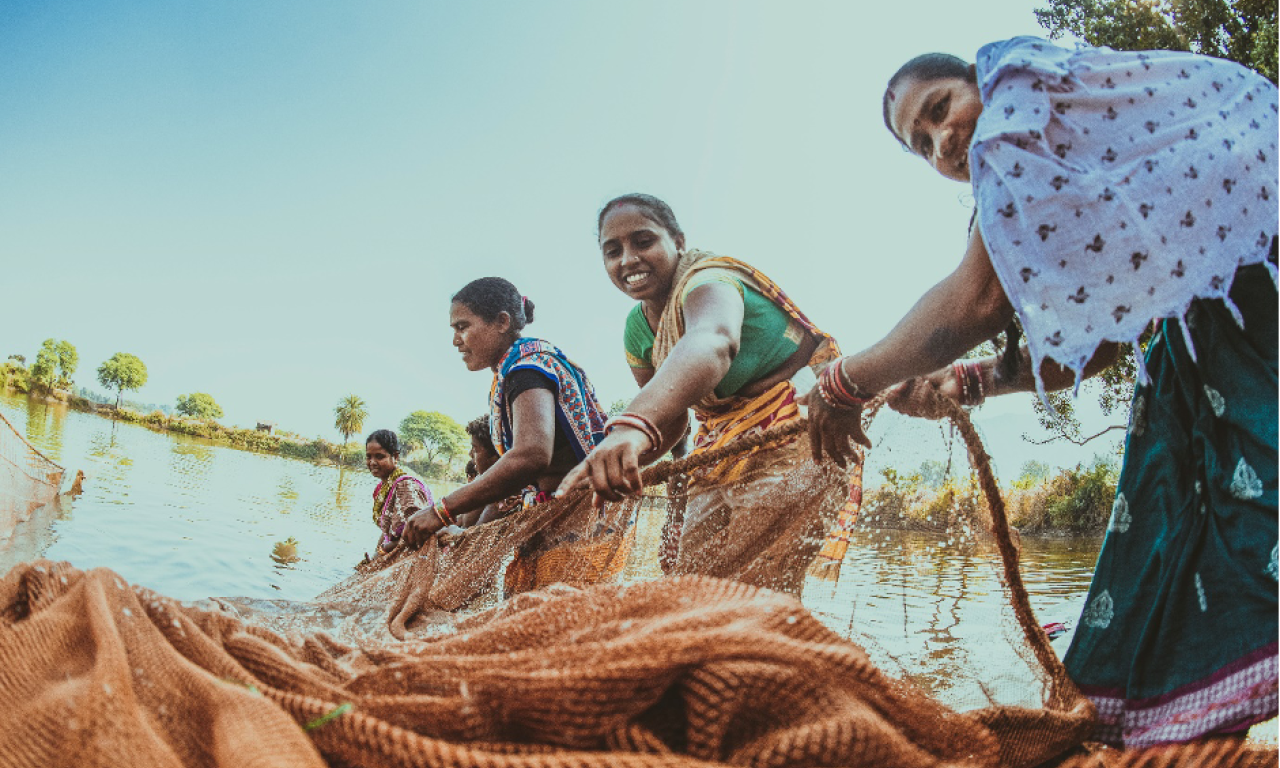
- Ponds are a key component of the rural agricultural landscapes of Odisha and one of the state's bounteous aquatic resources.
- The government of Odisha has set a unique example by using adaptive governance strategies to manage community waterbodies through aquatic farming.
- Despite not being as well protected by law or policy as other waterbodies, ponds offer environmentally friendly answers to some of the most significant issues associated with water management and climate change.
Ponds are one of nature’s major freshwater resources and an ecologically important lentic habitat – ecosystems that entail a body of standing water – that is primarily found in agricultural landscapes. As an essential component of blue-green infrastructures, ponds offer a variety of ecosystem services that lower the risk of flooding, lessen climatic fluctuations, improve the quality of runoff water and support biodiversity.
Ponds are a key component of the rural agricultural landscapes of Odisha and one of the state's bounteous aquatic resources. These ponds are normally used for irrigation, domestic water supply and fisheries. They also provide regulatory services, such as water retention, sediment control and water purification, as well as leisure and religious activities.
A pond's ability to provide services depends on the level of demand from the surrounding households. Ponds in Odisha are typically classified as either privately owned or governed. The region’s landscape is dotted by numerous waterbodies that are under the common property regime and governed by the Gram Panchayats (GP) under the aegis of the Panchayati Raj and Drinking Water Department (PR&DW).
Over the past few years, a number of earthen ponds in Odisha have been constructed under various government programs and community initiatives, primarily to fortify gross groundwater recharge and conserve water through rainwater harvesting. These ponds are frequently referred to as multi-utility GP tanks. The GP tanks are considered a durable community asset in Odisha’s rural landscape and are intricately associated with the socio-economic and cultural contexts of nearby rural commons.
Odisha has about 62,000 multi-utility GP tanks, with a total water area of 54,000 hectares. However, multiple anthropogenic stressors, such as agricultural intensification, pollution, inadequate drainage system, inappropriate management and climate change, are posing an increasing threat to these community waterbodies. As a result, the water quality of these lentic ecosystems is rapidly deteriorating. Abandoned, these ponds are covered with weedy and aesthetically unpleasant plants.
Revitalizing underutilized Gram Panchayat tanks
To reinforce the ecosystem services emanating from these tanks, the government of Odisha embarked on various natural resource management initiatives, one of which is to initiate the farming of aquatic foods as an entry point to restore unused and dilapidated tanks.
Partnering with WorldFish, the government of Odisha designed a gender-sensitive, economically profitable, nutritionally sensitive and environmentally sustainable aquatic farming scheme where Women Self-Help Groups (WSHGs) are the primary stakeholders with shared resource management responsibility.
The scheme promotes the farming of micronutrient-rich indigenous small fish species, such as mola, alongside established carp farming. To help WSHGs begin aquatic farming in GP tanks, the PR&DW instituted a favorable policy to lease the GP tanks to WSHGs on a long-term basis – between 3 to 5 years – across all 30 districts of the state in 2018 and 2019.
Nearly 10,000 WSHGs have started farming aquatic foods in these village tanks in every nook and corner of the state over the last 4 years. It is estimated that all 62,000 village tanks in the state will be utilized under this program over the next 5 years. The Odisha government’s move to involve the women-led grassroots institutions to manage and built co-ownership of the community water resources like GP tanks was a fruitful one that resulted in multiple benefits.
Low-input carp-based polyculture is environmentally sustainable where scientific pond management intervention eventually improves the health of a lentic ecosystem. A carp polyculture system offers an excellent opportunity to utilize the different trophic niches of a pond ecosystem. Additionally, introducing filter-feeding species like the mola is an efficient way to reduce nutrient enrichment and excess plankton.
The water from these tanks has multiple uses for the villagers as a result of the rehabilitation of the GP tanks through farming of aquatic foods, including irrigation, watering domestic animals and birds as well as activities that are religious and leisure in nature.
Unlocking the untapped potential of ponds
It is noteworthy to mention that, despite growing recognition of the ecological and societal value of ponds, the majority of freshwater research, regulation and conservation efforts have focused on large water bodies like lakes and rivers, leaving significant knowledge gaps in these measurably small but essential ecosystems.
Despite not being as well protected by law or policy as other waterbodies, ponds offer environmentally friendly answers to some of the most significant issues associated with water management and climate change. They play an unexpectedly critical role in the global carbon cycle. Cumulatively, pond ecosystems worldwide could potentially sequester as much carbon as the oceans due to their vast numbers. Ponds, however, are frequently overlooked in global carbon budgets.
In heavily altered landscapes, pond ecosystems usually offer a higher level of biodiversity. They are also known to support and shelter a variety of species. In addition to aquatic species, many terrestrial species such as pollinators, amphibians, reptiles, birds and mammals rely on ponds for water, food and habitat.
Odisha is particularly vulnerable to climate change because of the high monsoon variability that frequently causes meteorological droughts. Many of its districts experience multiple hazards and suffer from severe food insecurity. The lack of adequate blue infrastructure often poses risks to peripheral and marginal communities and thereby has strong implications for water conservation.
The government of Odisha has set a unique example by using adaptive governance strategies to manage community waterbodies through aquatic farming, which has resulted in increased water storage and conservation, improved environmental scenarios, direct income generation, increased food and nutrition security as well as the empowerment of women.
Collaboration among key actors, such as blue economy policy decision-makers, government and non-governmental organizations as well as aquatic farming communities, is crucial to ensure the legitimate utility of these tanks and sustainable management of the rural and semi-urban lentic ecosystem. Governance alone would not have been sufficient to make these water systems efficient and effective.

